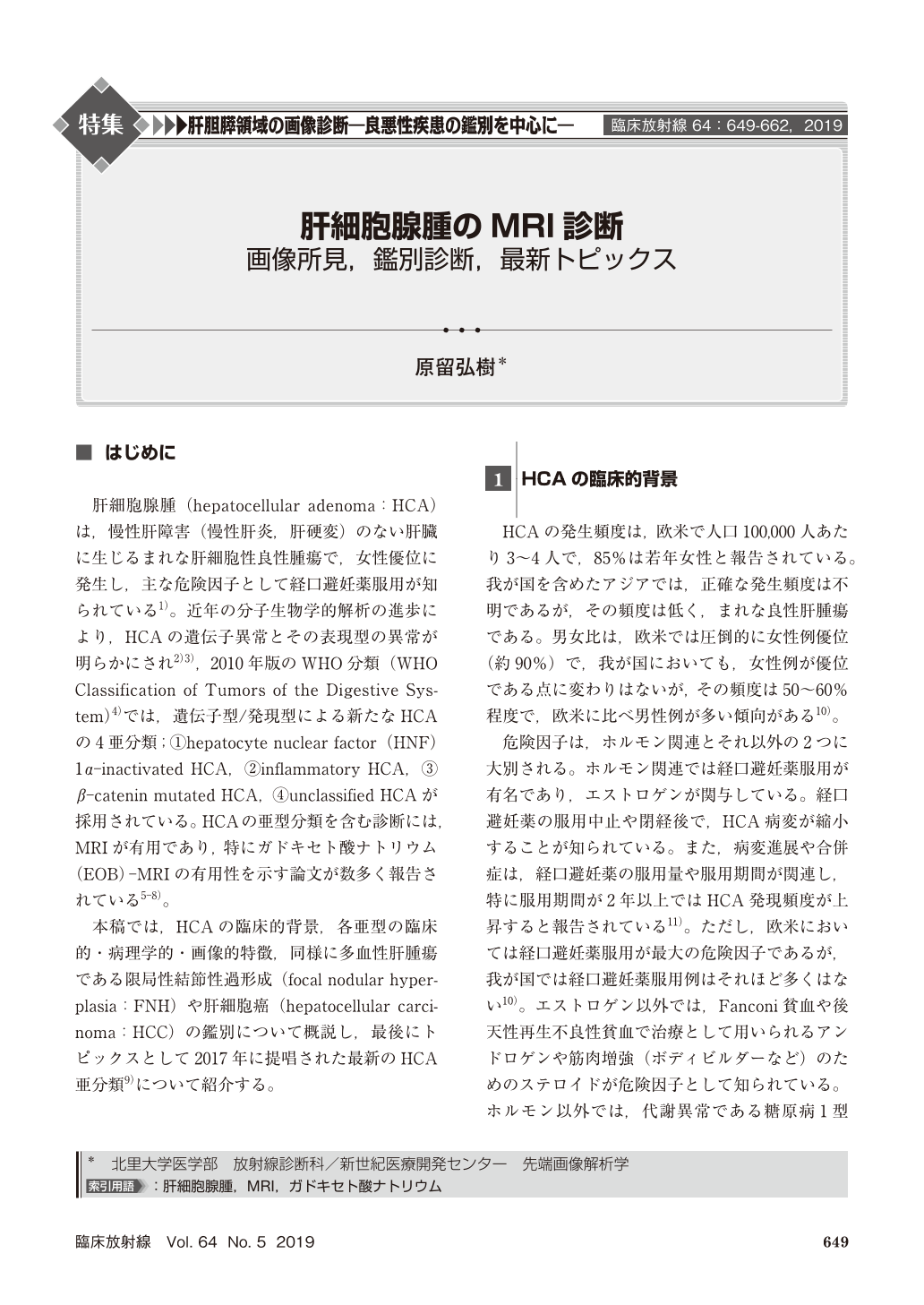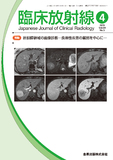Japanese
English
- 有料閲覧
- Abstract 文献概要
- 1ページ目 Look Inside
- 参考文献 Reference
肝細胞腺腫(hepatocellular adenoma:HCA)は,慢性肝障害(慢性肝炎,肝硬変)のない肝臓に生じるまれな肝細胞性良性腫瘍で,女性優位に発生し,主な危険因子として経口避妊薬服用が知られている1)。近年の分子生物学的解析の進歩により,HCAの遺伝子異常とその表現型の異常が明らかにされ2)3),2010年版のWHO分類(WHO Classification of Tumors of the Digestive System)4)では,遺伝子型/発現型による新たなHCAの4亜分類;①hepatocyte nuclear factor(HNF)1α-inactivated HCA,②inflammatory HCA,③β-catenin mutated HCA,④unclassified HCAが採用されている。HCAの亜型分類を含む診断には,MRIが有用であり,特にガドキセト酸ナトリウム(EOB)-MRIの有用性を示す論文が数多く報告されている5-8)。
Against a background of advance in molecular biological analysis, World Health Organization classification recently recognized four subtypes of hepatocellular adenomas(HCAs)and different biological behaviors depending on each subtype has been revealed. In clinical setting, subtyping diagnosis of HCAs is crucial for determining management and therapeutic planning. For the purpose, MR imaging, especially using gadoxetic acid disodium plays a key role and radiologists should gain a further understanding of the imaging features of each HCA subtype. In this paper, clinical and pathological characteristics and MR imaging features of each HCA subtype, and differential diagnosis of them from hypervascular lesions such as FNH and HCC are reviewed, and finally, recent topics is introduced.

Copyright © 2019, KANEHARA SHUPPAN Co.LTD. All rights reserved.


